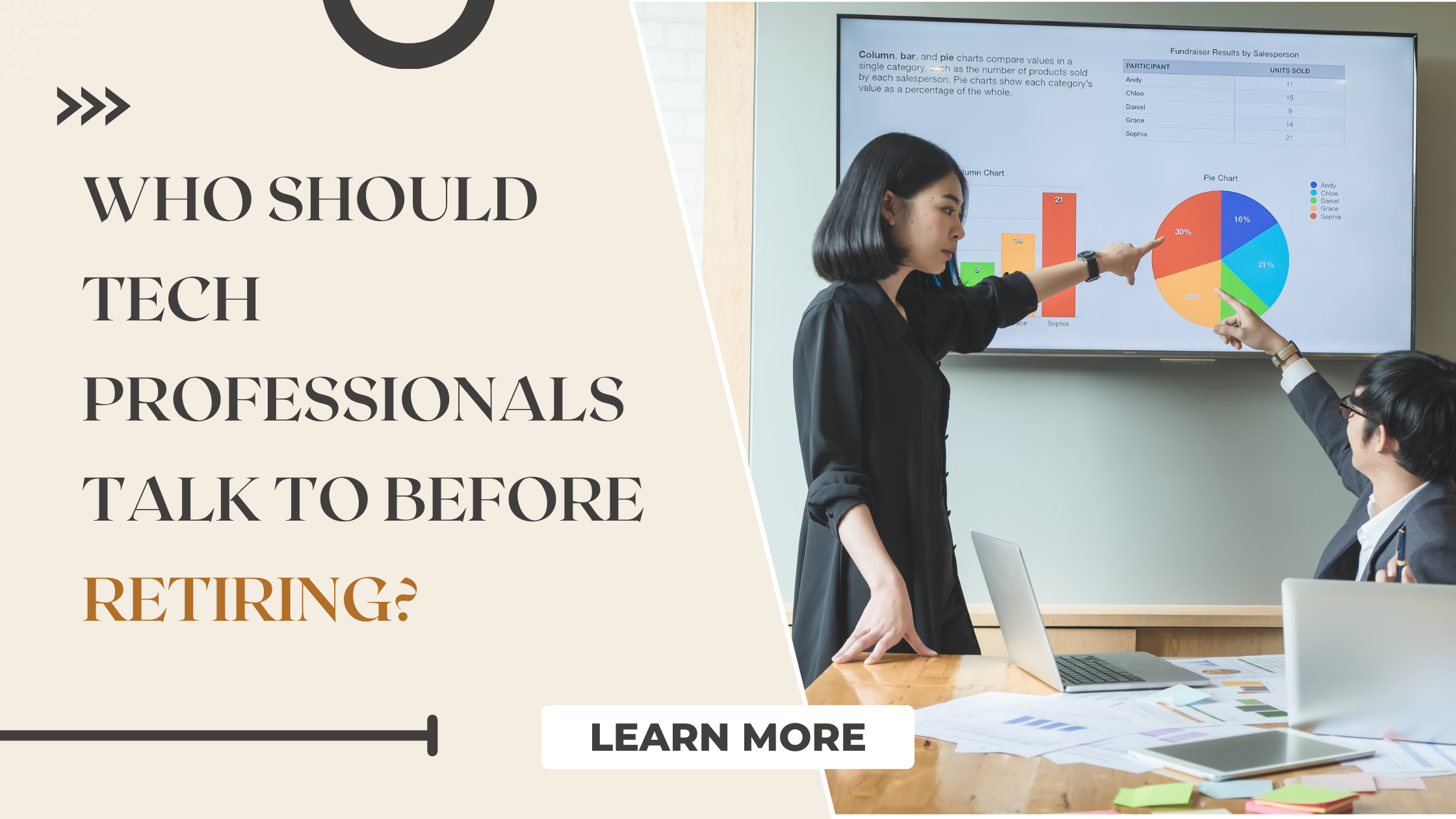2020 is here! Find the right financial advisor.
Roshani Pandey is a financial advisor and founder of True Root Financial. True Root Financial is located in San Francisco, CA and serves clients across the globe.
Helen has $20,000 sitting in her savings account, earning nothing. She heard on a CNBC TV show years ago, that she needs to find the right financial advisor to invest with, or at the very least, open a brokerage account and buy the S&P 500 index ETF. She’s been meaning to do that all these years but has not taken action, yet.
She works in the Finance and Treasury department of a tech company, where she deals with money all day but when it comes to her own money, she’s unable to take any action. Perhaps it’s the fear of pulling the trigger or just confusion around where to start or the pressure she’s put on herself to ensure the best outcome. But by doing nothing, she has actually locked the worst outcome for herself because time is of the essence when it comes to investing. I have been in Helen’s shoes myself. From my own experience, I would ask all the Helens out there to take action today.
Where do you start?
Before you find the right financial advisor, determine if you even need one. If you have money in a 401(K), you could invest in a target-date-fund that your employer provides. Check my article here on retirement investing.
If you have money outside of a 401(K), you might need to find the right financial advisor.
Types of financial advisors:
If your financial situation is fairly complicated, for example, if you need trust and estate advice to find the best way to distribute money to your heirs, you might be better off with a traditional financial advisor or a more cost-effective, online financial advisor. They will also provide you other advisory services and tax coordination between your accounts. Similarly, if you are someone who has received a significant amount of stock and other equity as compensation from your employer, they will also work with the company’s attorney to provide you a fully coordinated advisory service.
But, if your financial situation is not that complicated, a robo-advisor can be an effective and low-cost medium. In this article, I will provide you steps to find the right financial robo-advisor.
A word on self-directed brokerage:
Most firms offer this service for free and it takes less than half an hour to set up a brokerage account and start buying stocks.
Remember that this is truly a do-it-yourself set up where you are responsible for everything. It is a good option to temporarily park your cash in an ETF like the S&P 500 until you’re ready to create a diversified portfolio, but it is not a good long-term solution, unless you have a lot of time and energy to monitor your portfolios. Even then, it is not advisable because for a very low cost, you can get professional advice with a robo-advisor.
Robo-advisor overview:
While traditional financial advisors might meet you in person, create a custom portfolio and offer other planning services, a robo-advisor will typically ask you to fill out a questionnaire and an algorithm will come up with an investment plan and implement it for you.
Some of the most popular robo-advisors are Wealthfront and Betterment. I use a lesser well-known robo-advisor called FutureAdvisor, which is owned by the indexing giant, BlackRock.
Asset allocation questions:
Besides its simplicity and low-cost, what I like the most about robo-advisors is that they help me with asset allocation, or choosing how much in US or non-US stocks, value or growth, small caps or large caps I need to be in. Then, they keep the implementation really simple by using index funds.
Asset allocation is the biggest determinant of your portfolio’s performance. So, paying for this is where you get the most benefit. Before you commit to a robo-advisor, ask to see a sample portfolio to get a sense of the asset allocation. While the best asset allocation for you is dependent on your investment goal, here are some questions to ask a prospective robo-advisor:
1. What is the reason behind the stock vs. bond split?
The stock vs. bond split or your risk profile is the blueprint of your portfolio that determines what you will invest in and what kind of risk and returns you will get. Risk profile depends on your investment goals, time horizon and other factors.
I would describe my risk tolerance as aggressive and I have a long time horizon of 25+ years. My portfolio is 95% in stocks and only 5% in bonds and the reason for the bonds is to balance out the risk from having a sizable investment in emerging markets and small caps, both of which are generally riskier.
I have noticed some robo-adivsors’ portfolios being too cash or bonds heavy, even when the investor’s time horizon is 25+ years and they describe themselves as aggressive. While stocks can provide greater appreciation in the future, they are more volatile in the short-term. Bonds on the other hand are less volatile but their returns will generally be lower than those of stocks.
Remember that risk and return are two sides of the investment coin. When you don’t take sufficient risks, you are also doomed to get lower returns. This doesn’t mean taking risks without any rationale but when you have a long time horizon, you must take sufficient risks in order to realize the full potential of your investments and this means investing mostly in stocks. So, be sure to ask your advisor why they suggest a particular stock to bond split.
What is the right level of risk for you? This depends on your risk profile, which in turn depends on your investment goals, time horizon and other factors. Check out my course to find your risk profile.
2. How diversified is the asset allocation?
Now let’s take a step above just the stock/ bond split and look into the actual allocation to different markets like US stocks, non-US stocks, value, small caps, etc. The more diverse these markets, the better. For example, instead of just buying one core US market ETF like the Vanguard Total Stock Market ETF (VTI), it is better if an advisor also includes value and small cap stock ETFs. Value stocks are stocks of companies that are currently undervalued and small cap stocks are stocks of companies with a smaller financial market value. Research has shown that including both small cap and value stocks can enhance your returns.
An even more diversified portfolio will also have exposure to international small caps and international value, in addition to US small and value stocks.
 Product comparison: Out of all three robo-advisors – Wealthfront, Betterment and FutureAdvisor – FutureAdvisor has the most diverse portfolio.
Product comparison: Out of all three robo-advisors – Wealthfront, Betterment and FutureAdvisor – FutureAdvisor has the most diverse portfolio.
3. What asset classes are included and why?
Another key question to ask in order to find the right financial advisor is what asset classes are included in the portfolio. While including certain asset classes like real estate investment trust (REITs) can be a good idea, others like commodities or energy sector funds can be questionable. This is because these asset classes are very volatile. They are often best left to an active manager, a specialist in these types of investments, who decides what energy companies to buy and sell and when.
Another asset class I have seen in robo-advisor portfolios are municipal bonds. Municipal bonds or munis as they are commonly know as are issued by state governments, municipality or cities to finance expenditures such as bridge and highway construction. They generally have lower yields than treasuries (government bonds) or corporate bonds of similar terms because they offer tax incentives that can significantly lower taxes for someone in a a high tax bracket.
Typically, very high income earners or high-net-worth individuals and families invest in these kinds of bonds. However, for most investors, municipals bonds are actually disadvantageous on an after-tax basis because we don’t typically fall in such high tax brackets. So, you end up getting lower returns and no tax advantages.
If you see your robo-advisor’s portfolio include such asset classes, make sure to ask them the rationale for including them.
 Product comparison: While both WealthFront and FutureAdvisor include REITs, Betterment does not. WealthFront includes energy sector ETFs and both WealthFront and Betterment have a small allocation to municipal bonds.
Product comparison: While both WealthFront and FutureAdvisor include REITs, Betterment does not. WealthFront includes energy sector ETFs and both WealthFront and Betterment have a small allocation to municipal bonds.
4. Do they shift the asset allocation as markets change?
Generally, most robo-advisors have a long-term approach, where their asset allocation will not change dramatically as market conditions change. Strategies that change their asset allocation frequently as market conditions change, usually charge much higher fees for their insight. Despite that, many don’t succeed and provide sub-par returns after fees. Some robo-advisors will shift the asset allocation as their assumptions about the long-term risk and returns of asset classes change.
Earlier in 2019, FutureAdvisor brought down their allocation to international and emerging markets stocks and increased their exposure to US stocks. This has turned out to be a good move so far as US stocks have heavily outperformed international stocks for the year.
Ask your robo-advisor if they do this and how well these asset allocation shifts have performed.
 Product comparison: All three robo-advisors claim to provide asset allocation shifts.
Product comparison: All three robo-advisors claim to provide asset allocation shifts.
5. Do they diversify index exposure?
Generally most robo-advisors invest in ETFs that mirror certain indexes. Even though two indexes might cover the same market, they might not provide the same exposure. For example, for emerging markets, we can either choose the MSCI indexes or the FTSE indexes. The FTSE emerging markets index has exposure to China A-shares. These are shares of Chinese companies traded in mainland China. MSCI does not have China A shares. So, the exposure to China is also higher in the FTSE emerging markets index. This is an important difference because the performance of Chinese stocks will have a bigger impact on the FTSE emerging markets index funds than the MSCI fund.
Which index should you invest in? If you have a view on China, you can choose one index over the other. Most robo-advisors are passive managers. So, they don’t maintain views on specific emerging market countries. Their value proposition is providing you long-term comprehensive exposure to the market at a low cost. It’s not deciding which countries are best to invest in and when. In keeping with this value proposition, the right approach is to have exposure to both to provide a comprehensive emerging market exposure. So, ask your robo-advisor if they provide index diversification like this.
 Product comparison: Out of all three robo-advisors, FutureAdvisor diversifies index exposure the most.
Product comparison: Out of all three robo-advisors, FutureAdvisor diversifies index exposure the most.
6. Do they provide tax-loss harvesting, dividend re-investment and re-balancing?
Although house-keeping items like these can seem insignificant, they can make a big difference in your portfolio’s performance. It is one of the main reasons to even hire an advisor – so that you don’t have to spend a lot of time managing the day-to-day operations of your portfolio.
As you receive dividends from your investments, it is imperative to invest them right away in order to compound your returns over time. Similarly, overtime your asset allocation will go off course as some positions appreciate in value and some might lose value. Your advisor should have a disciplined re-balancing strategy set so that your portfolio doesn’t go off course too much.
Tax-loss harvesting is a process by which your advisor will incur paper losses in your portfolio in order to lower your taxes.
 Product comparison: All three robo-advisors provide this service.
Product comparison: All three robo-advisors provide this service.
7. Do they offer any financial planning services
In trying to find the right financial advisor, access to financial planning can be the most important requirement for some individuals. Some robo-advisors will help answer specific questions around planning for life events like marriage or retirement, trust and estate, insurance and taxes. If this is important to you, ask if they offer any of these services.
If your financial situation is more complicated, you might need a financial advisor who provides a more integrated and comprehensive planning service rather just answering some questions. The financial advisor will work with your trust and estate lawyer, accountant and if you have any equity compensation, with your company’s attorney to provide you comprehensive wealth management.
 Product comparison: Betterment provides the most financial planning help among the three robo-advisors. While WealthFront gives you access to some online planning tools, FutureAdvisor does not provide any planning, except for some basic retirement planning tools.
Product comparison: Betterment provides the most financial planning help among the three robo-advisors. While WealthFront gives you access to some online planning tools, FutureAdvisor does not provide any planning, except for some basic retirement planning tools.
8. What fees do they charge?
Generally, robo-advisors have low advisory fees anywhere from 0.25%-.50% of the assets you invest with them. For example, if you invest $1,000 with an advisor, they may charge $2.50-$5 in fees in a year.
This is much lower than those of traditional financial advisors whose advisory fees alone are typically around 1%. Plus, they also charge management fees on individual strategies, which can be another 1% or higher if they use active strategies. So, you might be looking at total fees of around 2%.
Betterment and WealthFront have lower fees of 0.25% and some other robo-advisors have higher fees like FutureAdvisor which charges .50%. I have talked before about how fees can really be detrimental to performance and eat away your returns. However, in order to find the right financial advisor, you should never judge fees in a vacuum but based on what the total offering is and what services you need.
Conclusion:
- FutureAdvisor has the best portfolio out of the three providers based on the asset allocation and implementation topics discussed above. However, they lack in financial planning help. Cost: 0.50%
- WealthFront is a close second in terms of its portfolio. Plus, they also offer digital tools to plan for homeownership, retirement and college at no additional cost. You can also open a 529 college savings plan with them. Cost: 0.25%
- Betterment’s main selling point is the planning service they provide. For a small additional fee, you can get on a call with a licensed financial planner to discuss topics like college planning, marriage and retirement advice. If you need ongoing advice, you could also opt in for a Betterment Premium plan that comes at a cost of 0.40% and an account minimum of $100,000 . It provides you unlimited access to financial professionals in the areas of college planning, marriage, retirement and managing equity-based compensation. Cost: 0.25-0.40%
So, what should you do?
- If you have a straightforward financial situation and don’t need any planning help: consider FutureAdvisor.
- If you need some simple planning help: consider WealthFront. They offer basic planning tools online.
- If your financial situation is more complicated and you need to speak with financial advisors on the phone: consider Betterment.
 Tip: An alternative would be to open an account with both FutureAdvisor and Betterment to take advantage of FutureAdvisor’s investing platform and Betterment’s planning services. It may also lower your overall fees.
Tip: An alternative would be to open an account with both FutureAdvisor and Betterment to take advantage of FutureAdvisor’s investing platform and Betterment’s planning services. It may also lower your overall fees.
DISCLAIMER: This site exists to thought provoke and learn from the community. Your decisions are yours alone and we are in no way responsible for your actions. Please think long and hard before taking and financial decisions. Please be advised that nothing on this site constitutes tax advice.










Leave a Reply
Want to join the discussion?Feel free to contribute!